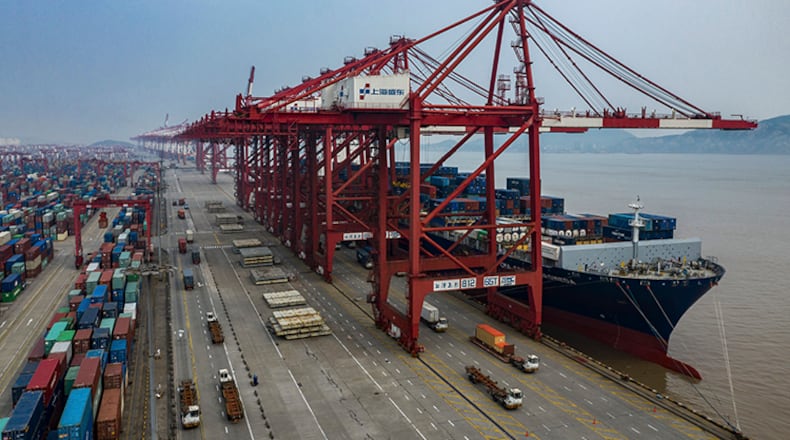The United States and China have agreed that an initial trade deal between the two countries would roll back a portion of the tariffs placed on each other’s products, a significant step toward defusing tensions between the world’s two largest economies.
The situation
The so-called “phase one” agreement has not been finalized, and a deal could fail to materialize as it has in previous rounds of negotiations. But if a pact is reached, the Trump administration has committed to rolling back some tariffs, according to people familiar with the negotiations.
»FROM MAY: Georgia farmers would be hurt by China's retaliatory tariffs
Investors have already begun anticipating some type of resolution. Stocks soared Thursday after the Chinese government said Beijing and the Trump administration had agreed to remove some tariffs as part of any deal.
What it means
The commitment marks the first time the United States has agreed to remove any of the tariffs it has placed on $360 billion of Chinese goods. While President Donald Trump canceled a planned tariff increase in October, he has routinely dangled the prospect of additional tariffs if Beijing does not change its economic practices and accede to America’s trade terms.
Credit: Mark Schiefelbein
Credit: Mark Schiefelbein
The development suggests the two sides are moving closer to a deal that would provide relief to businesses and consumers that have struggled with the additional costs of tariffs. Trump and his Chinese counterpart, Xi Jinping, are facing increasing political and economic pressure to resolve their 19-month trade fight, which has inflicted pain on both sides of the Pacific.
Previously
Last month, Trump announced he would drop his plan to increase tariffs to 30% on Oct. 15 as part of a first-phase trade deal, but the president made no mention of the tariffs he had already placed on more than $360 billion of Chinese products.
Since then, the United States has begun considering rolling back tariffs put in place Sept. 1 on more than $100 billion of Chinese food, clothing, lawn mowers and other products, according to people briefed on the discussions.
Why it matters
While markets are booming, farm and manufacturing states continue to struggle under the weight of the trade war, which has included retaliatory tariffs on U.S. goods.
» RELATED: New China tariffs may impact Georgia's agricultural exports
The fight has brought the economies of several Farm Belt states to a near standstill, data released by the Commerce Department on Thursday showed. From the middle of 2018 through the middle of this year, growth in Iowa, Kansas and Nebraska slowed to less than 1% for the year, well below the more rapid expansions they had enjoyed in the first half of 2018.
In the second quarter of this year, which ran from April to June, gross domestic product rose by an annual rate of 1.1% in Wisconsin, Michigan, Iowa, Illinois and Georgia. GDP grew by 1% in Indiana and Kentucky.
While the Trump administration has insisted that Americans are not bearing the brunt of the tariffs, business and farmer groups disagree.
» MORE: Georgia boat-building industry's confidence dented by trade wars
The lobbying group Tariffs Hurt the Heartland released a report this week that found that U.S. consumers and businesses have paid an additional $38 billion in tariffs between February 2018 and September 2019 as a result of the trade war.
The trade war has inflicted pain on both sides. U.S. tariffs now cover more than two-thirds of the products it imports from China, while Chinese tariffs cover 58% of China’s imports from the United States, according to tracking by Chad Bown, a senior fellow at the Peterson Institute of Economics.
What's next
U.S. officials have emphasized that any deal depends on China taking more aggressive action to protect U.S. intellectual property and that Trump would make the final determination. If China doesn’t agree to the terms Trump likes, he could ultimately leave all tariffs in place or only remove a small portion.
Talks are continuing, but it remains unclear when and where the two sides might sign a deal.
Trump and Xi were due to meet at this month's gathering of Asia-Pacific leaders in Chile, but that event was canceled due to protests there.
That dampened hopes a face-to-face meeting might produce progress. But U.S. officials say the two governments are looking for a different location.
About the Author
Keep Reading
The Latest
Featured



